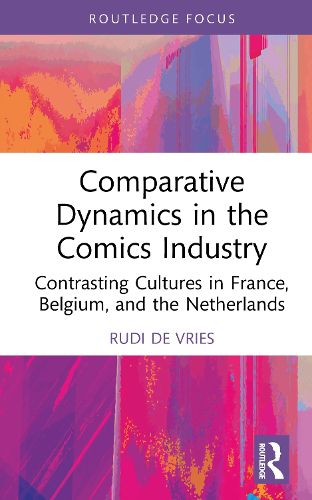Readings Newsletter
Become a Readings Member to make your shopping experience even easier.
Sign in or sign up for free!
You’re not far away from qualifying for FREE standard shipping within Australia
You’ve qualified for FREE standard shipping within Australia
The cart is loading…






Due to the enormous cultural and economic impact of the Marvel movies, manga, and anime, research on the comics industry is growing, but has focused primarily on the US and Japan. This book focusses on the European comics industry to explore the complex impact of organizational and cultural differences in audience behaviours, both in the comics industry specifically and in the creative industries in general.
Drawing on the author's research on the contrasting comics culture of the Netherlands, Belgium, and France, the study uses institutional theories and organizational ecology to compare the interactions of publishing organizations with artists, audiences, and each other. It combines this with a critical approach to modernization theory to evaluate how historical, cultural, and religious factors might impact the audience for comics and how those audiences respond to and interact with this specific creative medium. The book demonstrates the benefits of using combinations of theoretical frameworks to draw out more nuanced interpretations for this and other under-researched creative industry areas.
With its unique insights, this book will be of great interest to researchers in the comics industry, as well as a fascinating contribution to research in cultural-related audience behaviour for all scholars in the creative industries.
$9.00 standard shipping within Australia
FREE standard shipping within Australia for orders over $100.00
Express & International shipping calculated at checkout
Due to the enormous cultural and economic impact of the Marvel movies, manga, and anime, research on the comics industry is growing, but has focused primarily on the US and Japan. This book focusses on the European comics industry to explore the complex impact of organizational and cultural differences in audience behaviours, both in the comics industry specifically and in the creative industries in general.
Drawing on the author's research on the contrasting comics culture of the Netherlands, Belgium, and France, the study uses institutional theories and organizational ecology to compare the interactions of publishing organizations with artists, audiences, and each other. It combines this with a critical approach to modernization theory to evaluate how historical, cultural, and religious factors might impact the audience for comics and how those audiences respond to and interact with this specific creative medium. The book demonstrates the benefits of using combinations of theoretical frameworks to draw out more nuanced interpretations for this and other under-researched creative industry areas.
With its unique insights, this book will be of great interest to researchers in the comics industry, as well as a fascinating contribution to research in cultural-related audience behaviour for all scholars in the creative industries.